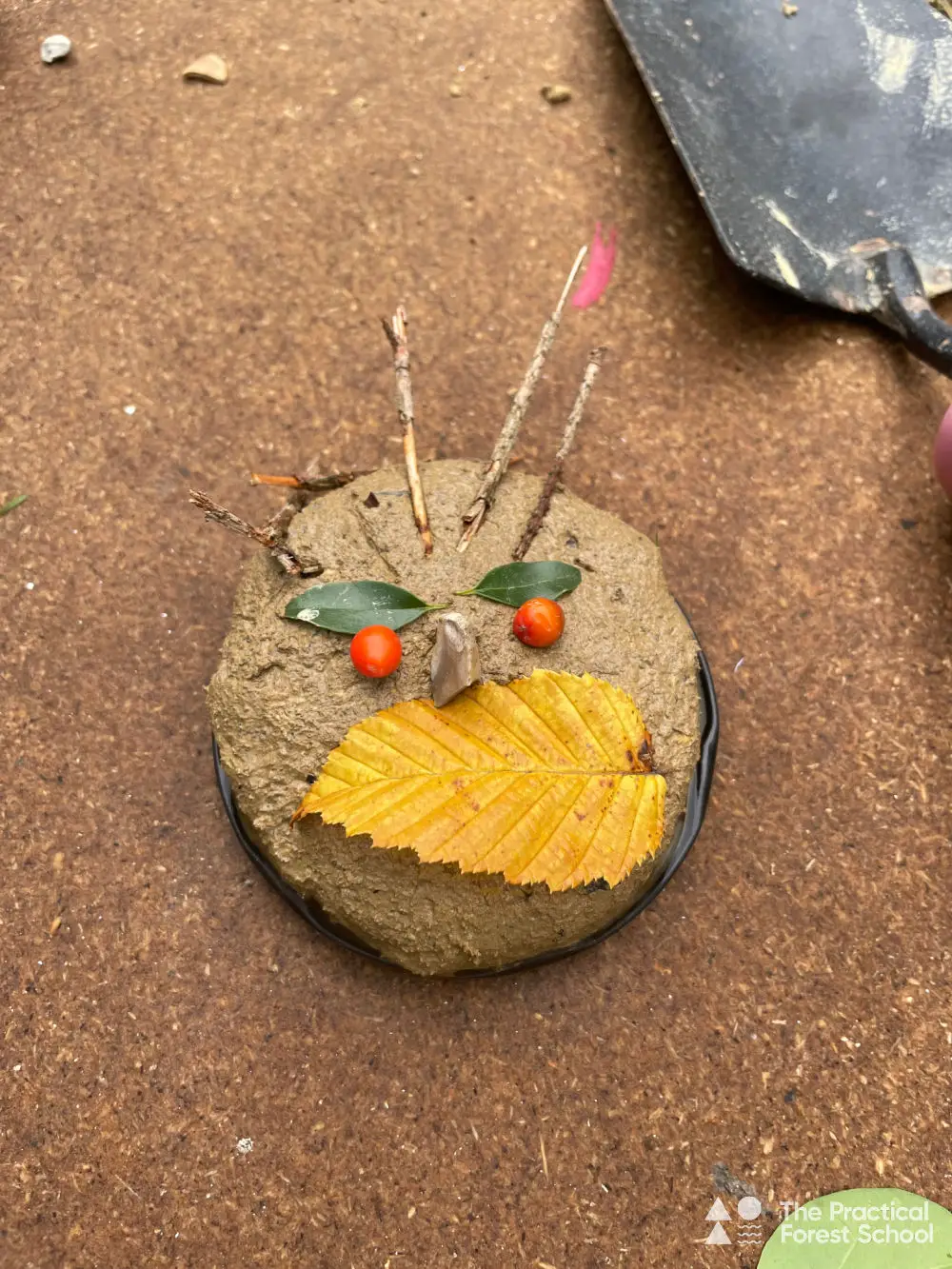What Kids Learn From Playing in Mud
This blog is reader-supported. When you purchase something through an affiliate link on this site, we may earn some coffee money. Thanks! Learn more.
This article contains affiliate links at no cost to you.
When most people think of mud, they probably don’t think of it as being a particularly beneficial activity for children.
But those people aren’t forest school people!
There are many benefits to mud play that it’s worth being aware of. If you’re a forest school leader needing to justify why the children in your sessions are coming home caked in mud, or a parent or educator looking for ways to feel better about kids splashing in the mud patch, you’re in the right place!
In this article we’ll talk about the benefits of playing in the mud, some mud activities you can set up for playtime, mud kitchens (because who doesn’t love a mud pie?) and what children learn from muddy fun.
The TL;DR is: Not only is it great for gross motor development and sensory exploration, but it also provides opportunities for creativity and problem-solving. So what exactly can children learn from playing in the mud?
The benefits of playing in mud
We all know that playing in the mud is one of the most fun things that kids can do. Remember back to when you used to make mud pies or “perfume” from flower petals mashed in an old saucepan.
But beyond fun, there are other benefits to letting children run riot in the dirt.
Here are just a few.
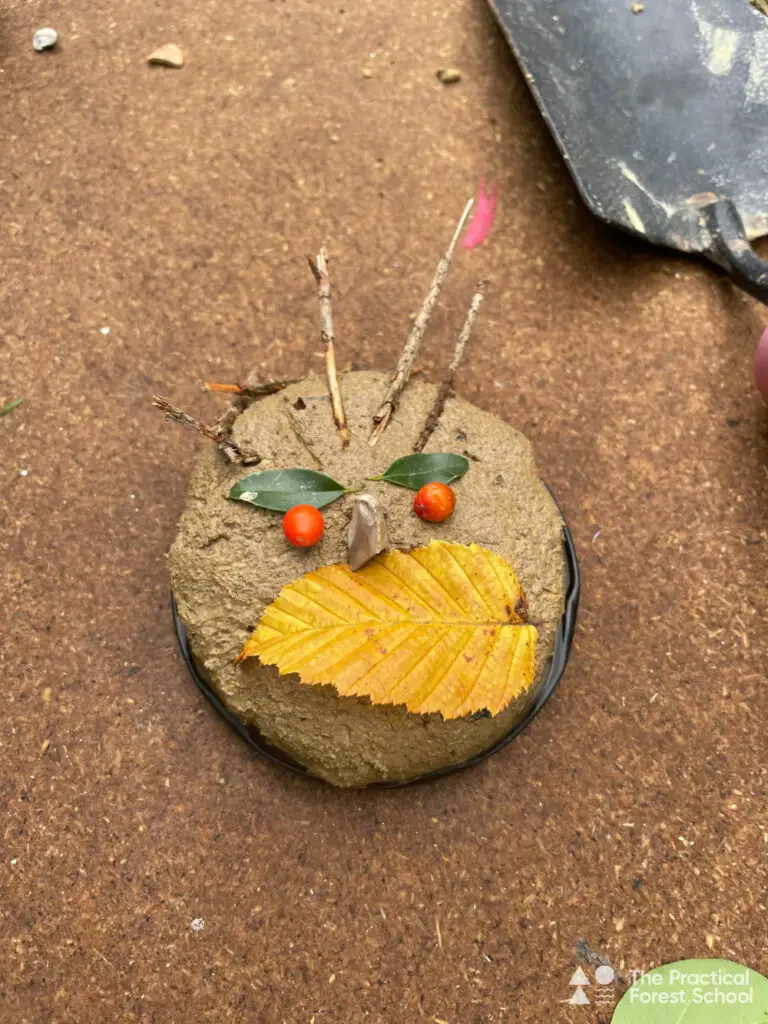
1. It’s great for their skin
Mud contains minerals and other nutrients that can be great for the skin. In fact, many people use mud masks and other treatments to improve their skin health.
I’m not sure that I’d choose mud from the bottom of the stream that runs through the river as a face pack, but ultimately it’s very similar stuff!
You know the content of your mud better than I would – use your professional judgement about what mud you encourage children to play with.
2. It can help boost immunity
Playing in the mud can help to expose children to different bacteria and viruses. This can help to build up their immunity and help them to fight off illnesses more effectively.
My grandmother used to add a pinch of dirt to vegetables as she boiled them – it was something she’d picked up in the war years from having a vegetable patch at home. While that isn’t something I’d advise today, it shows that for many years people have believed that a pinch of dirt was good for you.
3. It’s a great way to burn energy
Running around in the mud can be a great way for kids to burn off excess energy. If your kids are full of energy but you don’t want them to wear themselves out indoors, playing in the mud can be the perfect solution.
Mud adds resistance when walking, so it takes extra energy to squelch through it! Just make sure everyone has rubber boots or welly boots so they keep their feet dry and clean.
4. It’s therapeutic
There’s something about playing in the mud that can be therapeutic. It can help to relieve stress and tension.
The sound of it, the smell of it, the connection to nature: it’s all good for mental health.
5. It’s great for learning
Mud can be a great way for kids to learn about their environment. They can learn about different animals and plants and how they interact with each other.
If you’re in an outdoor education setting, it’s good for curriculum-led sessions on:
- Minibeasts
- Habitats
- Building materials (we used stripped bramble and mud for making “wattle and daub” walls)
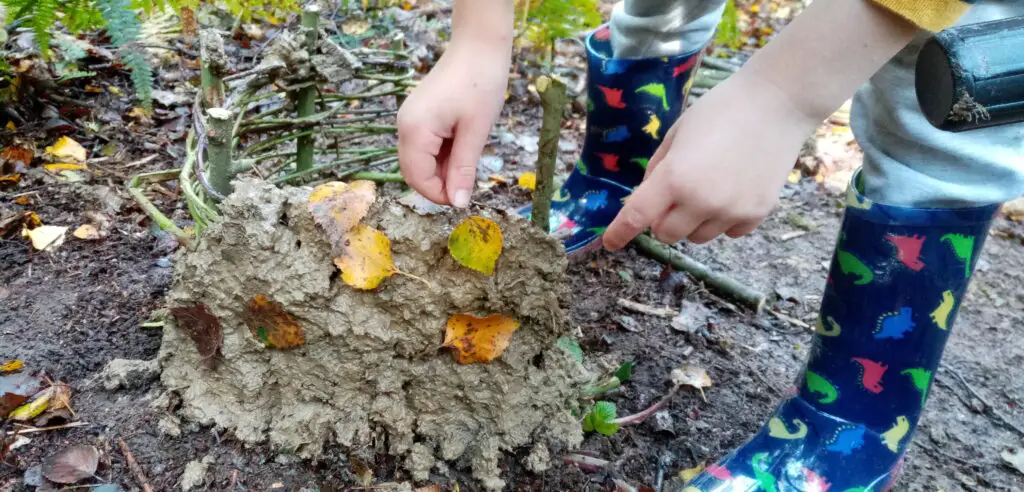
Plus, this kind of play is an activity to do in the forest for free! OK, most forest school activities use freely available materials, but if you are strapped for cash, then mud is a plentiful resource.
Key takeaway: Mud can be beneficial for skin, immunity, energy, stress, and learning.
Mud activities for children
Mud activities for children are a great way to get them outside and playing in the dirt. It doesn’t have to be a messy affair, either. But it usually is!
Here are some great mud activities for kids that are sure to get them excited about playing in the mud. Consider making a range of activities available for children to take part in as you prepare your forest school sessions.
1. Mud painting
This is a great activity for younger children. All you need is some mud, water, and paint brushes. Offer a selection of fat brushes and thinner ones.
Mix the mud and water together to create a paintable consistency. Then, let your little ones go to town painting on a canvas, piece of paper or concrete surface like a pavement or playground. Be prepared to hose the area down if your area is used by other people.
2. Mud pie making
Kids of all ages love this activity. All you need is some mud, water, and some kitchen supplies.
Let them mix the mud and water together to create a “pie crust”. They can work the mud like clay to create a mud-pastry shell. Then, they can fill it with whatever they want – foraged leaves from the forest floor, acorns and so on. Or more mud!
3. Mud sculpting
This is another great activity for older kids. All you need is some mud and water. Do you see a theme here? Muddy play really doesn’t take many resources.
They can mix the mud and water together to create a sculpting medium. Then, they can sculpt whatever they want – animals, people, buildings, etc. Leave the mud creations to dry and then show them off!
Variation: Make tree faces
Use clay-y mud to create a face. Decorate the face with feathers, stones, sticks, leaves or whatever is lying around. Then attach the faces to a tree trunk to create guardians of the trees!
Some of our children prefer to not attach their face sculptures but instead just leave them out to dry. That’s fine too – we’re as child-led as we can be.
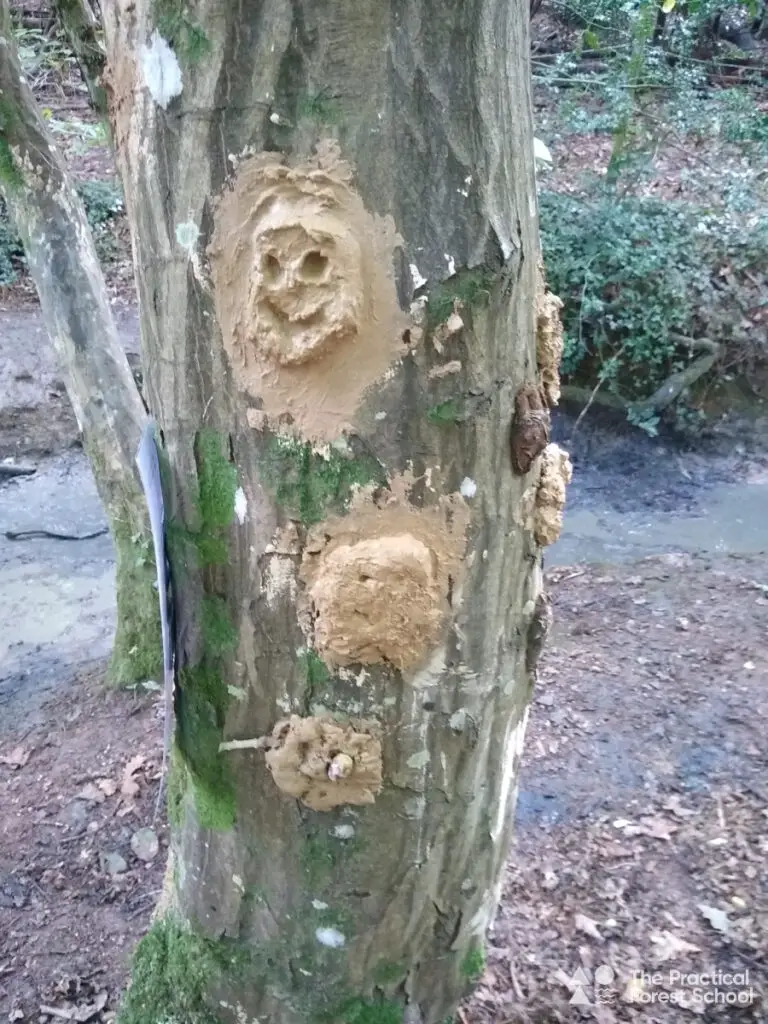
4. Mud ball fight
This is a great activity for all ages. All you need is some mud and water (again). I would also recommend a bucket with water and towels because this one is messy!
Mix the mud and water together to create mud balls. Perhaps the children want to organize themselves into teams. Perhaps they want to make a stack of balls before the game starts. Then, let the kids have a mud ball fight.
They’ll have a blast!
They’ll also get muddy (all over). Some kids won’t enjoy this game, and that’s fine. Not everyone wants to go home looking like a mud monster.
Tip: Do a risk assessment for this activity (as with all the activities you make available) because throwing mud does risk it landing in someone’s eye. If the balls are too hard and thrown at close range, they could hurt too, so be careful about what age group does this activity and the boundaries you set for safe play.
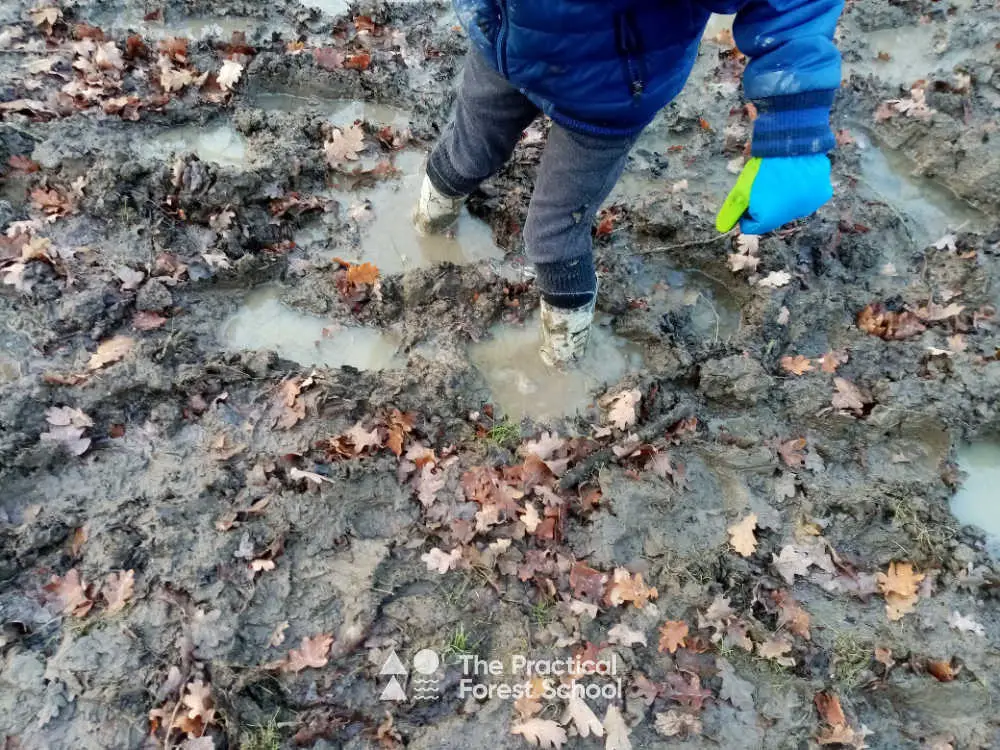
5. Mud bath/Muddy puddles
Got any fans of Peppa Pig in your group? Create some muddy puddles for splashing!
Just make sure they’ve all got appropriate clothing for forest school including boots.
Mix some mud and water together to create a mud puddle. Then, let the kids jump in and have fun. Smaller kids might want to sit in the puddle (puddle suits for the win!).
Mud activities for children are a great way to get them outside and playing in the dirt. Again, not all children are going to like all activities. Children who are not keen on getting dirty may be happy to play in a mud kitchen mixing and pouring, but might not want to get their hands sticky with making models, for example.
What children learn from playing in mud
Children learn at forest school. When children play in mud, they are engaging in a type of open-ended play that allows them to explore and use their imagination.
This type of play is important for children as it allows them to develop important life skills such as problem solving, critical thinking, and creativity.
Mud play also helps children to develop a sense of their own identity and to feel confident in their own abilities. This is because when children are playing in mud, they are in control of their own play and they can make choices about what they do.
This type of play also helps children to develop a sense of empathy as they learn to understand how other people feel. Instead, take a step back and think about all the important life skills that they are developing.
Mud kitchens: What are they and how to make one?
Mud kitchens are a great way to encourage outdoor play and exploration. They can be as simple or as elaborate as you like, and can be made using recycled materials.
If you’ve got the budget, you can buy one for your setting. We like this one, and this one, which would be great for a permanent set up at a pre-school.
A mud kitchen is basically an outdoor play kitchen, where children can cook up mud pies and other concoctions. They are often made from old tyres, pallets or crates. We have visited National Trust properties with purpose-built mud kitchens, and you can find some great examples for inspiration on Pinterest.
However, you don’t need to go that far. It’s fine to have a bench or table, some old pots and pans, and some kitchen utensils like wooden spoons. Kids will be fine with just that. Parents may be able to donate some supplies if you are just getting started and you can add to the kitchen as you go.
If you would like to make your own mud kitchen, here are some simple instructions.
You will need:
- Old tyres, pallets or crates
- Mud
- Water
- Sand
- Pebbles
- Leaves
- sticks
- pots, pans and other kitchen utensils.
Here’s what to do.
1. Choose your location
Mud kitchens can be set up on grass, concrete or even on a deck or balcony. If you have a permanent forest school home, I would recommend finding a space next to a wall or fence. However, you could also create an “island kitchen” so children can engage with the materials from both sides.
2. Set up the kitchen work surface
Arrange tyres, pallets, crates or a bench to make the work surface for the kitchen.
3. Add the utensils
In our experience, metal bowls work best because they are robust enough to live outdoors permanently. You might need to bring in the utensils during the worst of the weather, or replace them regularly if they get worn to the point of no longer being safe to use.
If you are shopping for mud kitchen utensils, watch out for sets that are actually too tiny. We like this utensil set, as it’s about the right size for pre-schoolers.
Alternatively, use a camping cooking set as that will withstand regular use outside. Or just use ‘real’ kitchenware, stuff donated from parents.
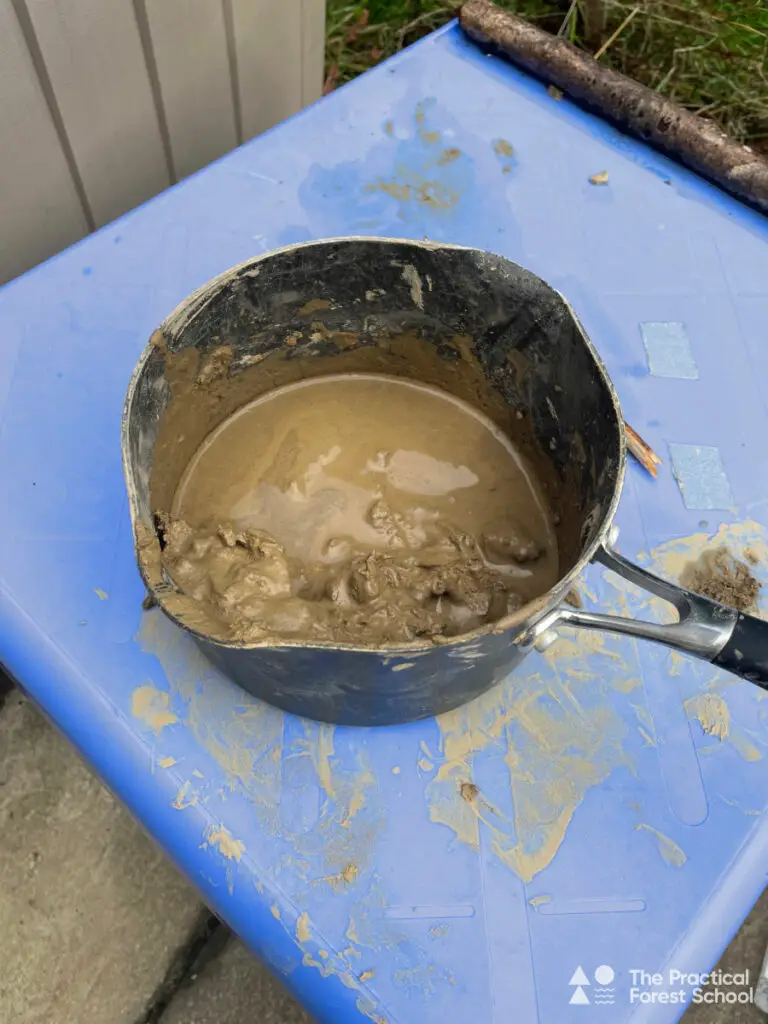
4. Make resources available
Fill a stack of tyres with sand, add a crate of pebbles, add a broom to brush up some leaves. Children need the ingredients for their creations, so make sure there are some natural resources around.
Bonus: Add a water supply
It’s more fun to cook if you have water! And it’s also good for hand washing when you are done. If you can add (or locate) a standpipe to your setting that will be useful.
Mud kitchens are a great way to encourage imagination, creativity and problem solving. They also promote gross motor skills, as children mix, pour and stir their mud pies. There are many learning opportunities that present as a result of having a mud kitchen in your setting.
Will you have a go at making one yourself?
FAQs about children playing in mud
Is playing in mud good for children?
There is no definitive answer to this question as it depends on a variety of factors, such as the type of mud, the child’s health, and the child’s age.
Some experts believe that playing in mud can be beneficial for children as it can help them develop a stronger immune system and improve their cognitive skills.
However, other experts believe that playing in mud can be harmful for children as it can expose them to bacteria and other harmful substances. Ultimately, it is up to the parents to decide whether or not they believe playing in mud is good for their children.
What do children learn from playing in mud?
Children learn about the properties of mud and how to manipulate it. They also learn about the creatures that live in mud and how to coexist with them.
Why do kids like playing in mud?
There are a few reasons why kids like playing in mud. First, it can be fun to get dirty and feel the mud squish between their toes.
Second, mud can be used to make things like mud pies or sculptures. And lastly, playing in mud can be a way for kids to cool off on a hot day.
In conclusion, mud play is a great way for children to explore their senses, gross motor skills and creativity. So next time your little ones are asking to play in the mud, don’t hesitate to let them!
Pin for later reading:
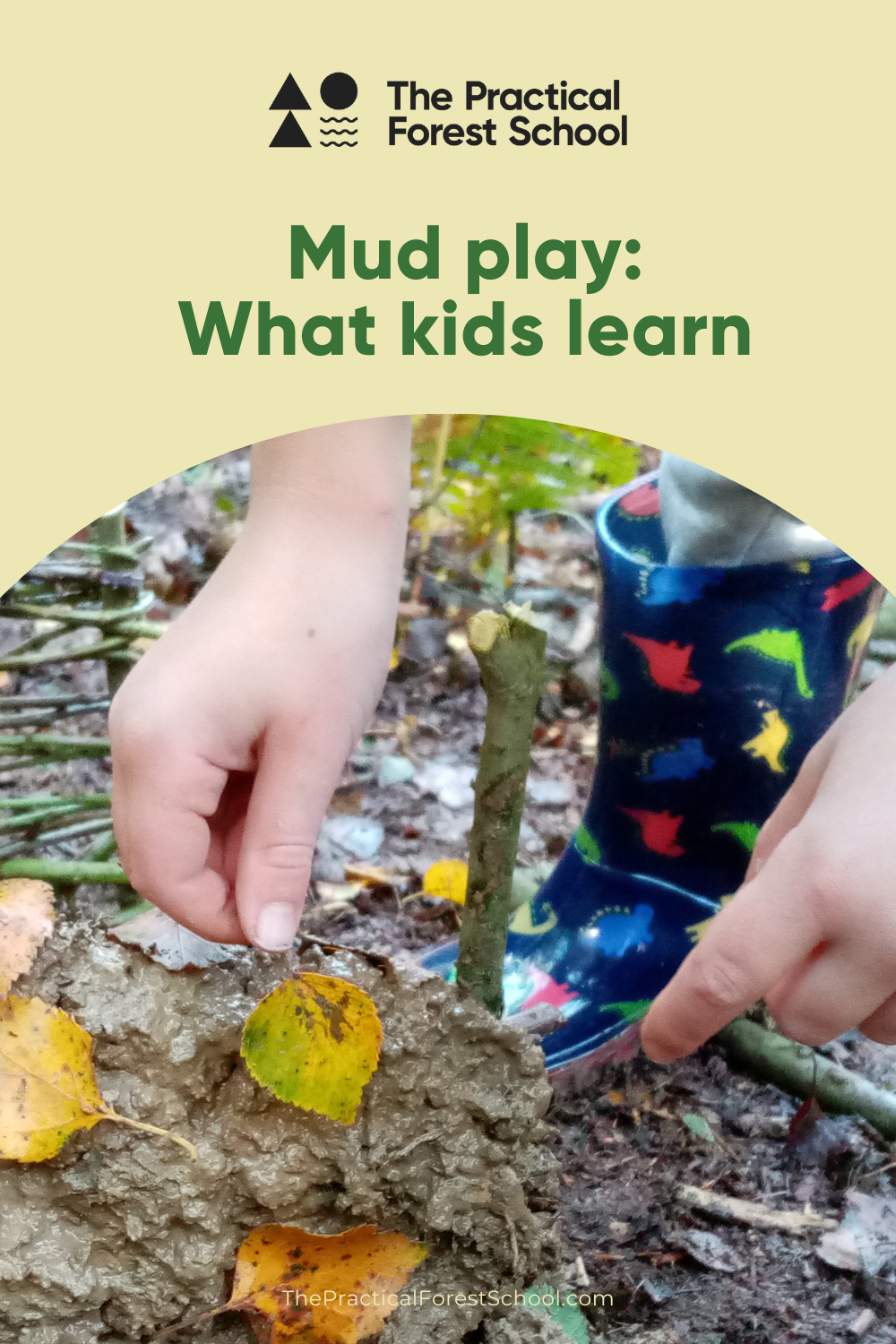

About the author: Elizabeth Borley
Elizabeth is our forest school administrator, responsible for running the website and managing bookings for afterschool clubs. She is a member of the Forest Childcare Association and loves walking in the woods and places with a view. As a parent, she understands the value of children spending time outdoors.
